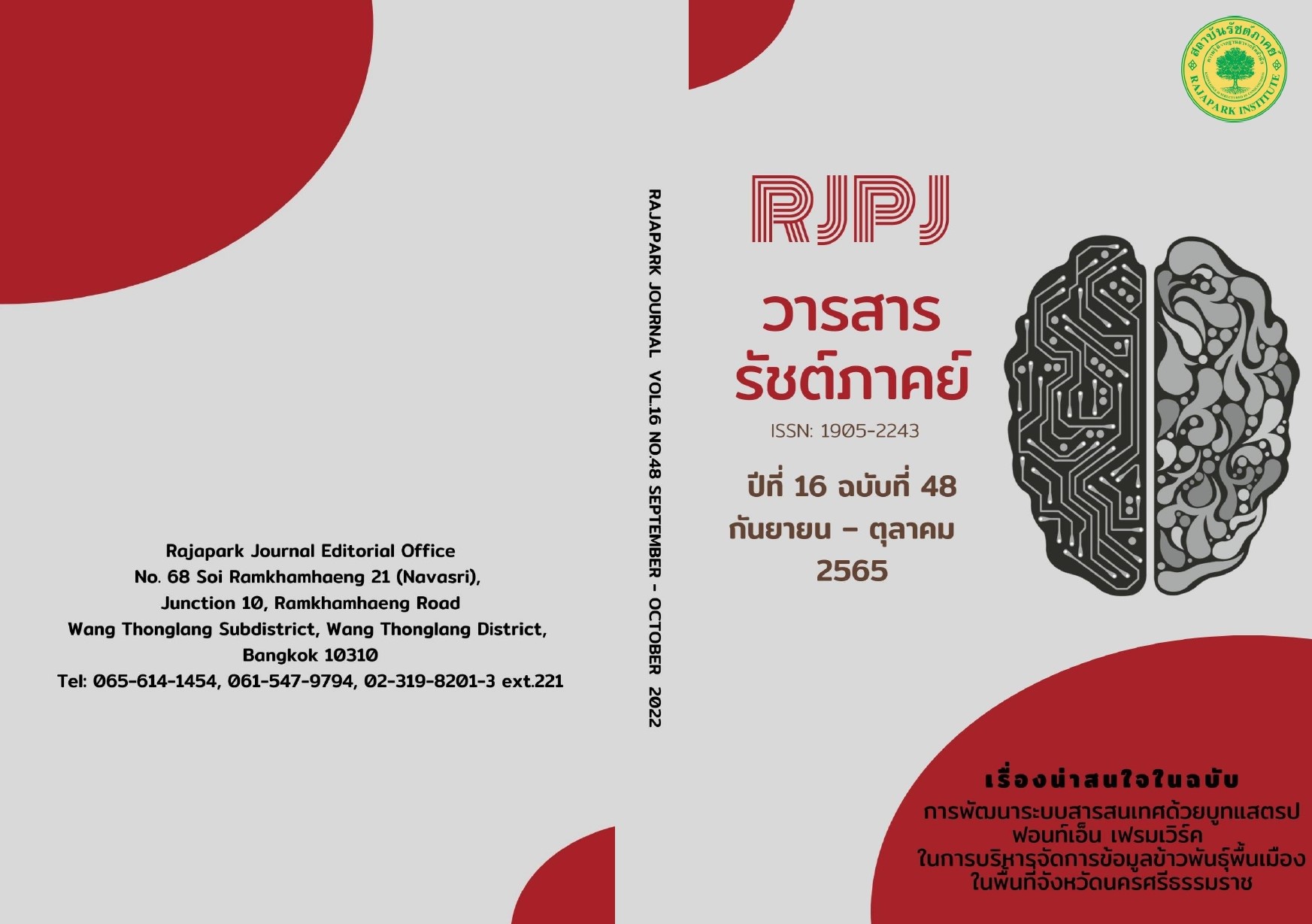Guidelines for the Management of Health Tourism According to the Perceptions and Behaviors of Stakeholders in Phra Nakhon Si Ayutthaya Province
Main Article Content
Abstract
The objectives of this research were to analyze the components of health tourism, to assess the need for health tourism perceptions and behaviors and to search Strengths, Weaknesses, Opportunities and Threats (SWOT) in management and guidelines for promoting health tourism development. The sample group for quantitative data collection was 507 Thai tourists who had visited Ayutthaya Province. The main informants for qualitative data collection were experts in government agencies, the private sector, community leaders, academicians, entrepreneurs and 14 Thai tourists by purposive sampling. The results of the research showed that the variables, components, and indicators of perceptions and health tourism behaviors were harmoniously consistent with the empirical data, necessary needs concerning perceptions and behaviors of health tourism by prioritizing the needs of current and supposed needs using the improved Priority Needs Index method (PNImodified), it was found that activities in tourist attractions were the most needed and searching for SWOT in the management and guidelines for promoting the development of health tourism, it was found that the strengths were attraction in tourist, as for the points that should be developed, there are 4 phases: access to tourist attractions activities in tourist attractions and tourism attraction management, as for opportunities: tourism attraction management, for threats were accessibility to tourist attractions and management of tourist attractions.
Article Details

This work is licensed under a Creative Commons Attribution-NonCommercial-NoDerivatives 4.0 International License.
Views and opinions appearing in the Journal it is the responsibility of the author of the article, and does not constitute the view and responsibility of the editorial team.
References
Boonchai, A., & Tansaraviput, J. (2003). Health Tourism: New Selling Point of Thai Tourism. Economic and Social Journal, 40(4), 22-27.
Boonyong, S. (2015, July 4). Medical Tourism. Horizon. http://horizon.sti.or.th/node/5
Creswell, J., & Plano Clark, V. (2007). Designing and Conducting Mixed Methods Research. Sage.
Diamantopoulos, A., & Signaw, A.D. (2000). Introducing LISREL: A Guide for the Uninitiated. Sage.
Hongsup, A. (2014). The Guidelines for Developing Hot Spring Resource in Health Tourism Destination Management in Northern Thailand. Chulalongkorn University.
Jinpon, P. (2019). Development of Health Tourism Promotion Model of Nakhon Si Thammarat Province. Journal of Southern Technology, 12(2), 27-42.
Keyuraphan, L., Bookoum, W., & Sungrugsa, N. (2016). A Development Model of Thai Phuan Community’s Tourism Activity Management to Promote Creative Learning in Nakhon Nayok. Veridian E-Journal Silpakorn University, 9(2), 2190-2201.
Kumboon, A., & Kovathanakul, D. (2013). The Small Town Tourism Assessment, Khemmaraj District, Ubonratchathani Province. Journal of Thai Hospitality and Tourism, 8(2), 3-22.
Pokora, B., & Lupini, C. (2021, June 3). Top 50 Best Places to Visit Post-Pandemic. Forbes Advisor. https://www.forbes.com/advisor/travel-rewards/top-50-best-places-to-visit/
Prasertsin, U. (2015). Developing the Eight Desired Characteristics of Secondary School Students [Research report, National Institute of Educational Testing Service (Public Organization)].
Tantiukoskula, S.A., Kingkaew, R., Sangduen, N., Jinpon, P., & Julatha, W. (2020). Development of Nakhon Si Thammarat as a Center of Health Tourism in the Upper South of Thailand. Journal of Southern Technology, 13(1), 191-199.
Teeranon, K. (2018). Thailand’s Wellness Tourism: Situation and Potential towards Competition of ASEAN Region. FEU Academic Review, 12, 22-34.
The Committee of National Tourism Policy. (2017). The Second National Tourism Development Plan (2017-2021). Ministry of Tourism & Sports, Office of the Permanent Secretary Tourism & Sports.
Wongwanich, S. (2019). Needs Assessment Research (4th ed.). Chulalongkorn University.


